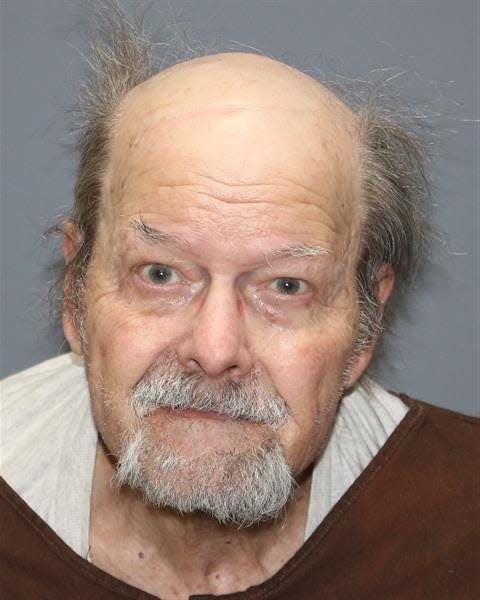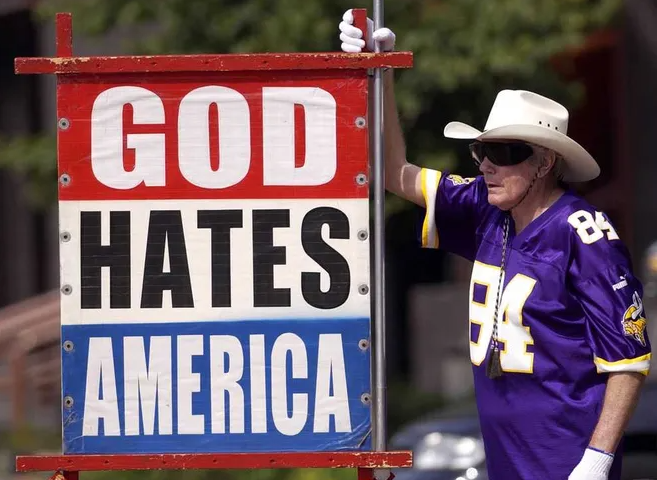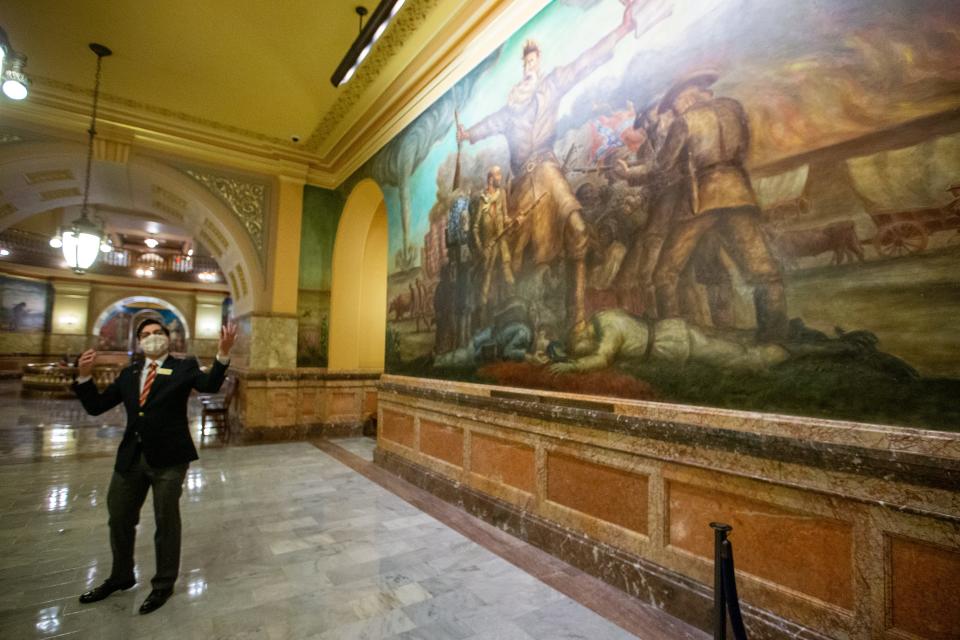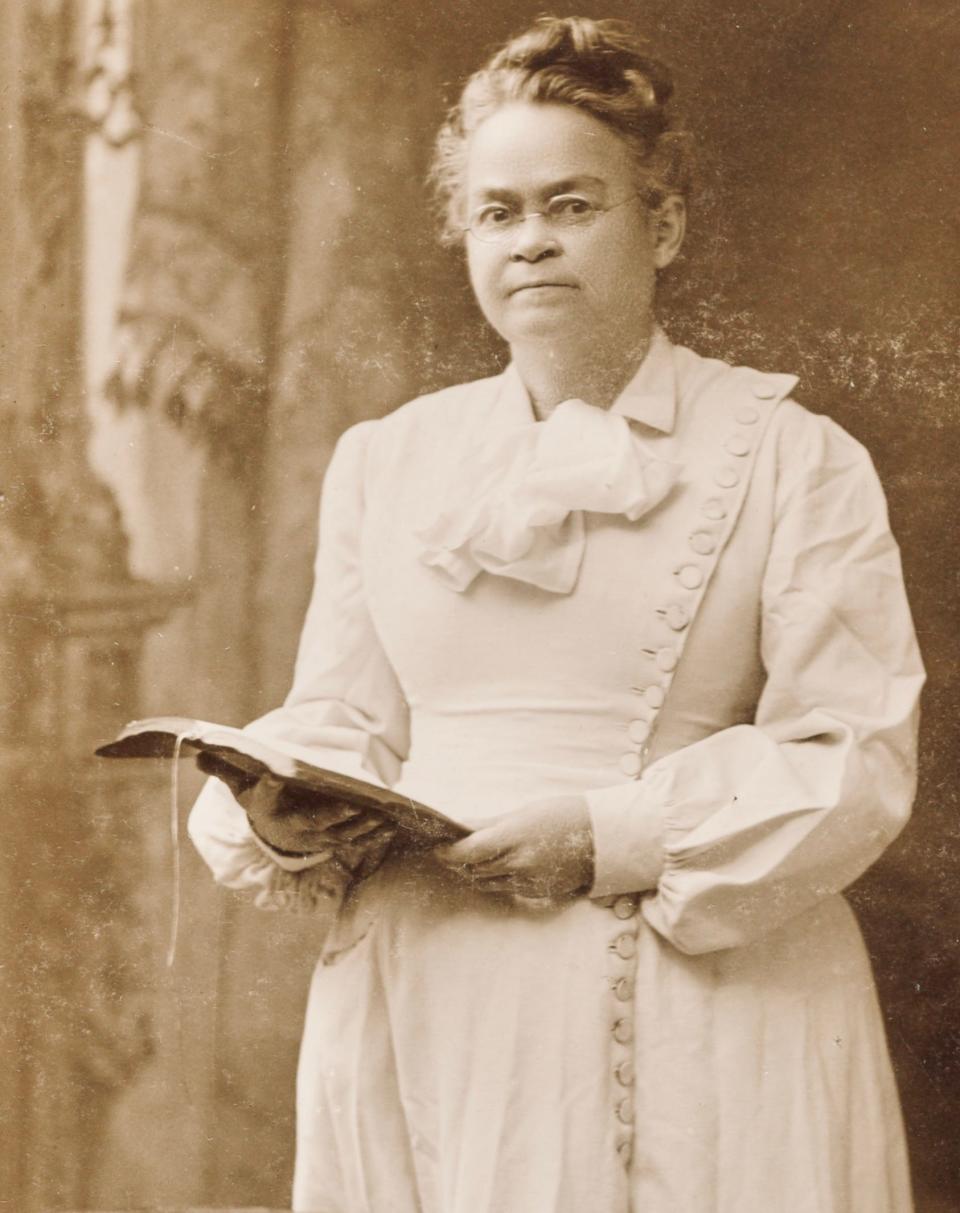Bloody Benders are among history's most notorious Kansans. Here are the rest.
- Oops!Something went wrong.Please try again later.
- Oops!Something went wrong.Please try again later.
The "Bloody Benders" murdered at least 11 travelers who stopped during the early 1870s at the small inn those two men and two women ran at their home near Cherryvale in Labette County in southeast Kansas.
The Benders were a couple between 50 and 60 years old and a man and woman in their 20s, who were thought to be their children. The young woman, Kate Bender, was considered particularly intelligent and alluring.
The four would lure travelers into their home for a hot meal and a place to rest. Then, as a lone visitor sat at a dinner table with his back to a canvas curtain, a Bender man behind the curtain would bash in his skull using a hammer.
The Benders would then slash the victim's throat, take his money, open a trap door in the floor and dump the body into a pit to be removed and buried after dark.
Amid amounting suspicions, the four eventually abandoned their home and fled in a wagon. An 1873 excavation found 11 bodies in their garden, although some suspect the Benders killed as many as 21 people. Their fate remains unclear.
The Benders remain infamous more than 150 years after their crimes, which is why The Capital-Journal chose them as being among the Most Notorious People in Kansas.
The others on the list include three killers of multiple people, a woman who became famous for smashing saloons, a physician known for transplanting goat testicles onto his patients' private parts, and a Topeka minister and disbarred attorney whose congregation's anti-homosexual picketing brought international attention and condemnation.
Here are the Most Notorious People in Kansas history:

BTK Killer Dennis Rader pleaded guilty to the murders of 10 people
Dennis Rader, also known as the BTK Killer, was sentenced to 10 consecutive life terms after pleading guilty in 2006 to the first-degree murders of 10 people between 1974 and 1991 in the Wichita area.
Rader's victims included seven women, one man and two children, ages 9 and 11. He typically targeted women, breaking into their homes and waiting for them. His victims were often bound, then suffocated or strangled.
Rader sent taunting letters to police and media outlets describing his crimes and dubbing himself "BTK," which stood for "Bind, Torture and Kill."
After a long hiatus, he reinitiated communication with media outlets and police in 2004 and was arrested in 2005 after investigators traced a floppy disk back to him.
Rader was ineligible for the death penalty because his last murder came in 1991, three years before Kansas reinstated the death penalty. He received prison sentences that leave him ineligible to be released until 2180.
Now 79, Rader is an inmate at El Dorado Correctional Facility, according to the website of the Kansas Department of Corrections.

Fred W. Phelps Sr.'s crusade against homosexuals made him famous
Fred W. Phelps Sr. and his crusade against homosexuals put Topeka's Westboro Baptist Church, which he founded and served as pastor, in the international spotlight amid contempt and criticism from the general public.
Phelps, born in 1929 in Mississippi, came in 1954 to Topeka with his wife, Margie Phelps, with whom he had 13 children. He subsequently started Westboro Baptist Church, which was formally organized in 1956.
Phelps graduated from Washburn Law School in 1964. He developed a reputation as a tough and savvy courtroom and civil rights attorney but surrendered his license to practice law while facing disciplinary complaints in 1991.
Phelps and his followers, most of them members of his immediate family, that year began picketing events that included funerals of gay people, AIDS victims, military veterans and disaster victims they said died because God was punishing the U.S. for tolerating homosexuality. Their graphic picket signs and mass distribution of vulgar facsimiles received national attention.
Fred Phelps Sr. died at age 84 in 2014, days after one of his sons, Nathan Phelps, posted on his website that his father had been excommunicated from Westboro Baptist Church. That church remains in operation and continues to picket.

John Brown led a Kansas massacre of five supporters of slavery
Radical abolitionist John Brown gained a reputation for fearlessness and violence as he sought to overthrow the institution of slavery in the U.S.
While many abolitionists considered him a hero, people on both sides of the issue condemned Brown’s killings of slavery supporters.
Born in 1800 in Connecticut, Brown operated various businesses before moving in 1855 to Kansas. He led slavery opponents in 1856 in battles with pro-slavery forces that helped the territory become known as "Bleeding Kansas."
Brown and his men in May 1856 carried out what became known as the "Pottawatomie Massacre," using swords to take five slavery supporters from their homes and kill them north of Pottawatomie Creek in Franklin County.
In October 1859, Brown led a 22-man party, which hoped to start a slave revolt as it took over the federal armory at what is now Harpers Ferry, W.Va.
They were subsequently defeated, with 10 being killed and five escaping. Seven, including Brown, were captured. Brown and the other captured men were hanged.
J.R. 'Doc' Brinkley transplanted testicular goat glands onto his patients
While critics denounced him as a charlatan and a quack, John R. "Doc" Brinkley advertised himself as being able to cure sexual impotence and make aging men fertile again by transplanting testicular glands of goats to their private parts.
Born in 1885 in North Carolina, Brinkley bought a medical certificate from a diploma mill and started practicing as a physician at Milford, near Junction City.
He began during the 1920s to operate a radio station, which he used to convince men from across the U.S. to receive his goat gland operations. He became a millionaire.
But in 1930, the state of Kansas revoked Brinkley's license to practice medicine. In an apparent attempt to regain his medical license, Brinkley conducted a write-in campaign for governor as an independent candidate.
Brinkley almost won, getting 29.5% of the vote compared to 35% for the winner, Democrat Harry Woodring. He then again ran unsuccessfully for governor in 1932 and 1934. Meanwhile, Brinkley's broadcasting license had been revoked.
Brinkley moved to Del Rio, Texas, and built a powerful radio transmitter just across the border in Mexico, which the U.S. government couldn’t regulate. He died at the age of 56 in 1942 in San Antonio, Texas.
Richard Hickock and Perry Smith murdered a Kansas family of four
Richard Hickock and Perry Smith's 1959 murders of the Herbert Clutter family at Holcomb in Finney County in southwest Kansas were the subject of Truman Capote’s celebrated 1966 true crime novel, “In Cold Blood.”
Hickock and Smith met as inmates in what is now Lansing Correctional Facility, where a fellow prisoner told them he had once worked for Clutter, whom he said kept a safe in his office at his home.
After Hickock and Smith were paroled, they broke into Clutter's home. After finding little money, they gagged and tied up Clutter, his wife and their two teenaged children, then killed them with shotgun blasts to the head at short range.
Hickock and Smith were subsequently arrested, convicted of four counts each of first-degree murder and sentenced to death by hanging. They spent more than five years on death row as their court-appointed attorneys pursued appeals.
Authorities allowed Capote, already a best-selling novelist, to visit Hickock and Smith. He wrote a best-selling and critically acclaimed book about the case that’s considered among the most important works of American literature.
Hickock, 33, and Smith, 36, in April 1965 became the next-to-last people to die on the gallows at Lansing. Those gallows were used for the final time in June 1965 to hang convicted murderers James Latham and George York.

Carry Nation was arrested more than 30 times for smashing up saloons
Temperance advocate Carry Nation became famous for using a hatchet to smash up saloons that sold alcohol in violation of a Kansas law that took effect in 1881.
Born in 1846 in Kentucky, Nation divorced her first husband — who had an alcohol problem — before he died in 1869. She married David Nation in 1874. They moved in 1889 to Medicine Lodge in south-central Kansas.
In 1894, Nation led a group of women into a pharmacy, where she rolled a keg of whiskey into the street, smashed it to the ground and set the contents afire, the Kansas Historical Society reported.
Nation was subsequently arrested more than 30 times for smashing up saloons, which she did in cities that included Kiowa, Wichita, Enterprise and Topeka, according to the website of the historical society.
Nation eventually shifted her focus to publishing a newspaper, the "Smasher's Mail," and appearing on the lecture circuit to capitalize on the fame she had achieved. She died at age 64 in 1911.
The U.S. enacted a nationwide prohibition on alcohol beginning in 1920, then repealed it in 1933. Kansans voted to repeal statewide prohibition in 1948.
Contact Tim Hrenchir at threnchir@gannett.com or 785-213-5934.
This article originally appeared on Topeka Capital-Journal: Bloody Benders and BTK are among history's most notorious Kansans

